When it comes to starting your own tomato plants indoors from seed, there are five little secrets that can make a huge difference between growing weak, feeble plants that struggle to survive – or nurturing strong, healthy transplants that are ready to thrive!
There is no better feeling than growing your own tomato plants from seed. Especially when you watch that tiny seed sprout, grow and produce a bumper crop of tomatoes.
But as fun and exciting as growing your own tomatoes from seed can be, it can also be a frustrating process for many. And in many cases, unfortunately, an expensive one. Let’s face it – buying all of those expensive seed trays, lights and “special” soil can be costly. But here’s the good news – it doesn’t have to be!
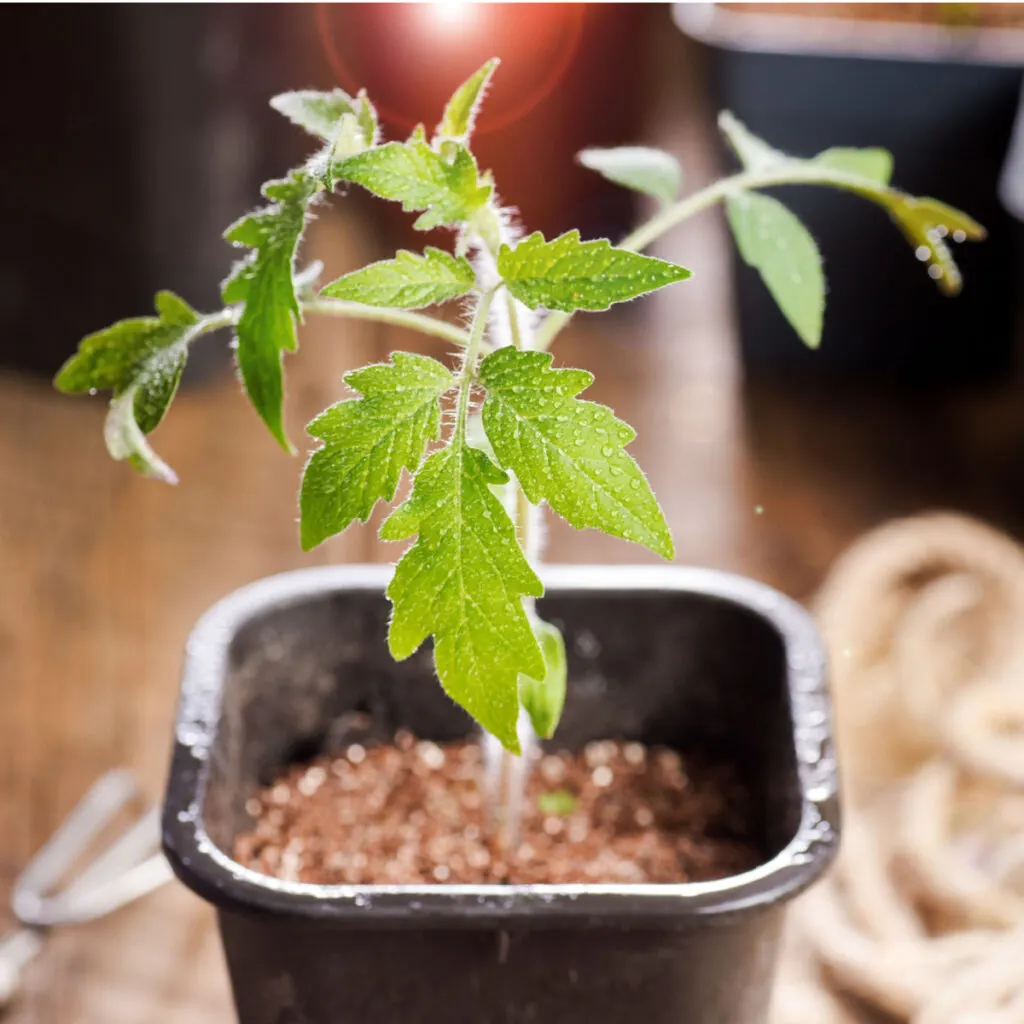
Contrary to popular belief, starting your own tomato plants from seed doesn’t have to be costly, difficult, or time consuming. Nor does it have to involve fancy equipment. In fact, with just a few simple tips and tricks, it can actually be quite simple. And successful!
Even better, it can also save you a tremendous amount of money versus purchasing transplants for planting. All while allowing you to grow amazingly delicious varieties that you can’t always find in stores!
5 Simple Secrets To Starting Tomato Plants Indoors
When gardeners struggle to get their tomato seeds to sprout and grow well, the issue usually boils down to a few simple conditions or needs that aren’t being met for their plants. And by simply fixing those tiny little issues, you really can grow amazing plants.
With that in mind – here is a look at five simple things to do when starting seeds indoors that will all but ensure your tomato transplants are healthy, strong and ready to grow like crazy!
#1 Start Seeds At The Right Time – Starting Tomato Plants Indoors
Knowing when to start your seeds indoors is the first key to success. Plants started too early grow far to big to maintain indoors until planting day. It can also lead to a lot of extra work and stress on plants if you have to keep transplanting.
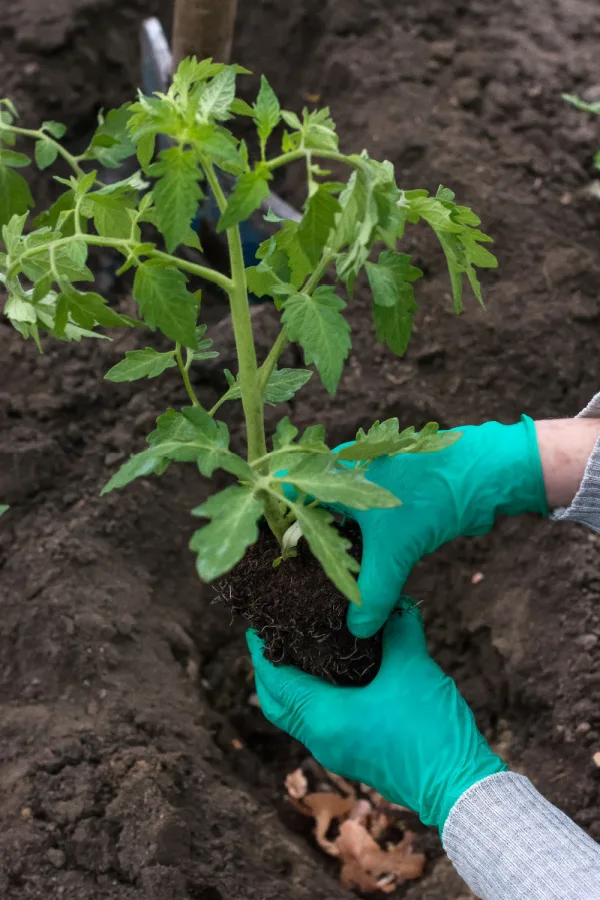
On the other hand, starting your seeds too late has it’s own set of problems as well. Undersized plants can struggle to survive outdoors after transplanting. They also are far more susceptible to damage from pests. With just a few sets of leaves and little foliage, small plants can easily perish when attacked.
The best way to know when to start your seeds is to count backwards from when you want to plant – and that means knowing your areas last average spring frost date. To be safe, your planting day outdoors should be about two weeks after the last average frost date. This allows the soil to warm and the threat of a late frost to be extremely low.
Many seed packs will tell you to start seeds six to eight weeks before planting day. But knowing it can take a week or two for seeds to germinate, it’s better to plant your seeds indoors about 10 weeks before you want to plant outdoors. This little secret will have your plants not too big, not too small – but just right!
#2 Plant In Larger Seed Containers – Starting Tomato Plants Indoors
Another big tip is to always use larger seed starting trays. Small seed starting trays might let you start 48 or 72 plants – but they will quickly outgrow their space and will require transplanting. That is exactly why larger seed trays are the answer!
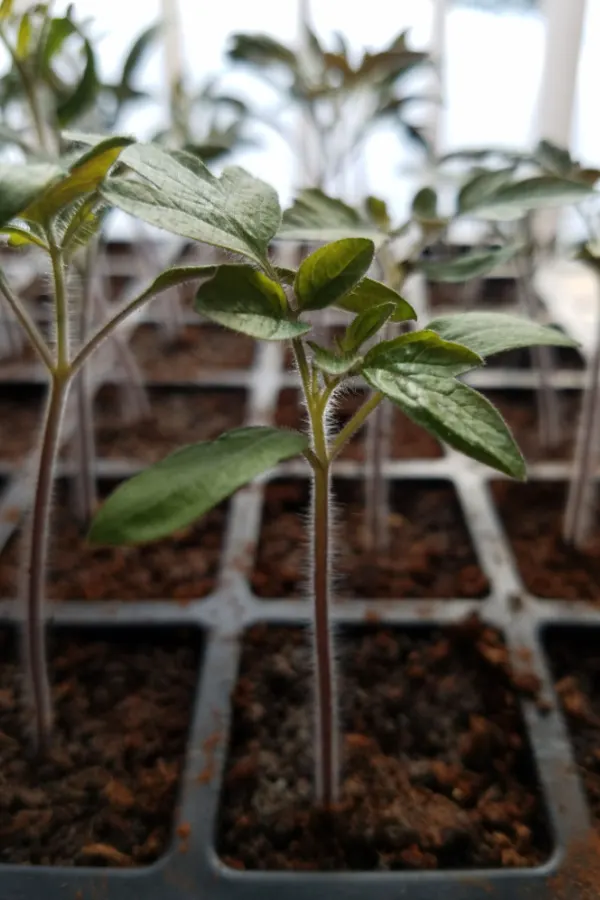
By choosing seed starting trays that are at least 2″x2″ wide and 3″ deep, you never have to transplant until they go in the garden. That means uninterrupted growth for your seedlings, without the worry of transplanting stress. Affiliate Product Link: Seed Starter Trays 300 DEEP Extra Large Cells Total
Every time you have to transplant, it causes a delay in root growth while the plant recovers. And that delay means your plants will achieve far less growth before planting day. Best of all, using larger cells also means far less work for you!
#3 Use The Right Soil – Starting Tomato Plants Indoors
This is one area not to skimp! Great soil really will result in growing great plants. To germinate and grow into healthy transplants, seeds need loose, light, and very fertile soil.
Unfortunately, garden soil and traditional potting soils simply don’t have enough of those qualities to really power strong growth from seeds. That is exactly why seed starting mixes are the way to go. Affiliate Link: Sun Gro Horticulture 8-Quart Black Gold 1311002 Seedling Mix
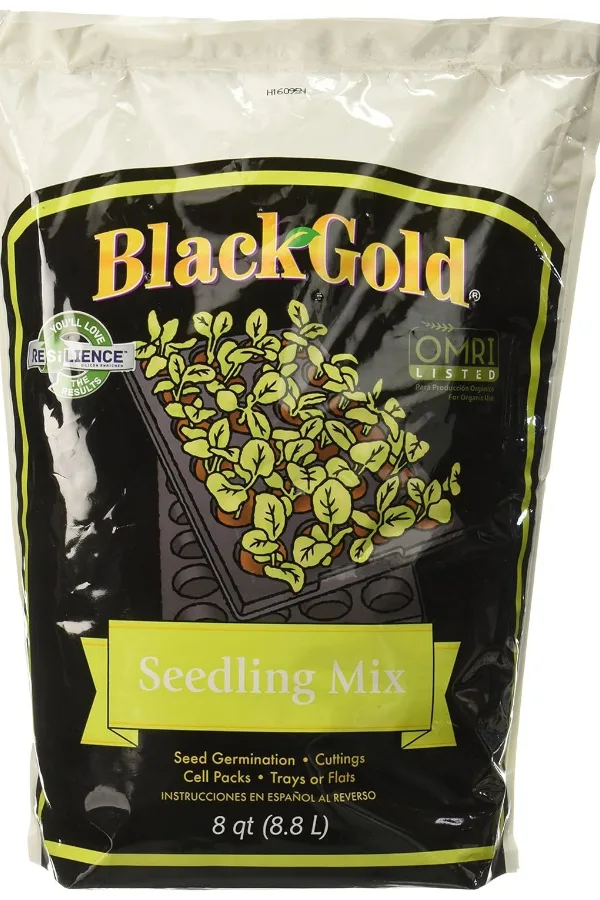
A good seed starting mix will be extremely lightweight and full of nutrients. Look for types that contain powerful all natural ingredients like compost and/or worm castings. You can also make your own great seed starting soil with 5 simple ingredients right at home. See: How To Make Incredible Homemade Seed Starting Soil
#4 Give Your Plants The Right Light – Starting Tomato Plants Indoors
Tomato seedlings need light for big growth – and a lot of it! But how they get that light makes a huge difference in their overall health and growth.
One of the biggest mistakes gardeners make is to use a sunny windowsill for light. Unfortunately, the sun’s light source is too far away. And it also doesn’t shine for long enough each day in late winter. It results in plants that grow skinny, weak, and that lean heavily to the light. See: Why Not To Start Your Seeds In Windows
But here’s the good news – you don’t need fancy, expensive grow lights. All you need is a simple LED or fluorescent shop light. When your seeds sprout, place the light closely above them, about 1 to 1.5 inches above the top set of leaves.
As the plants grow, move lights up to stay just above them. This simple set-up will produce strong stems and healthy, full plants. By the time your plants are ready for the outdoors, they will be more than ready for big success!
Listen In Below To Our Podcast To See How To Use Worm Castings To Power Your Tomato Plants!
Now all that is left is to leave those lights on every day for 12 to 14 hours. This will provide plenty of bright light for them to grow strong and steady. And if you are wondering, it’s not good to leave the light on longer.
If the lights stay on 24/7, plants will grow plants too rapidly. In addition, not allowing the plants to have darkness and rest each day does not properly prepare them for outdoor life.
#5 – Feed Your Young Tomato Plants! Starting Tomato Plants Indoors
Last but not least, you need to feed your young seedlings to really power them up! One of the biggest mistakes gardeners make with young tomato plants indoors is to not feed them.
Once plants have sprouted and have been growing for a few weeks, a small dose of liquid fertilizer will do wonders for energizing plants. But the key to success here lies in giving them a steady but low dose of nutrients while they grow.
When feeding seedlings liquid fertilizers are the best choice for this. They can be applied easily while watering, and can be adjusted to a more lighter potency. This is ideal for young tomato plants that can have trouble surviving if they receive too many nutrients at once.
For best results fertilize seedlings every 10 to 14 days with either compost tea, worm casting tea, or a light mix of an organic liquid fertilizer. Both compost and worm casting tea are light enough they will not harm plants at full strength.
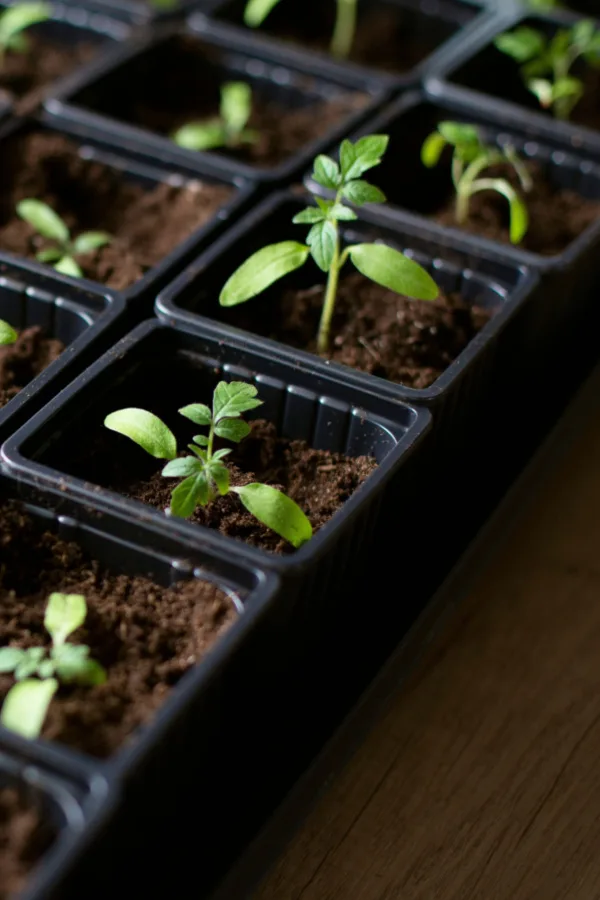
If you are using a commercial liquid fertilizer, however, mix at 1/4 of the recommended strength. This will still provide plenty of power but eliminate the risk of burning your plants. Affiliate Product Link: Espoma Organic 16 Ounce Concentrated Tomato! Plant Food
As your plants start to get bigger and planting day is near, begin to move them outdoors when the weather allows. Hardening off, or the process of getting plants ready to grow outdoors, is the final step to getting your garden growing in full swing. Once your transplants are growing in the garden, in order to keep them healthy and growing strong, be sure to check out: The Best Way To Water Young Tomato Plants – How To Know When To Water!
Here is to growing amazing tomato transplants this year – and to having your best harvest of tomatoes ever!
Simple Garden Life
Follow Our Facebook Page For Even More Great Tips! Simple Garden Life Facebook Page
Simple Garden Life is a website dedicated to keeping gardening fun, simple and enjoyable! We publish two new articles each week along with a new garden podcast episode every two weeks. This article may contain affiliate links.
